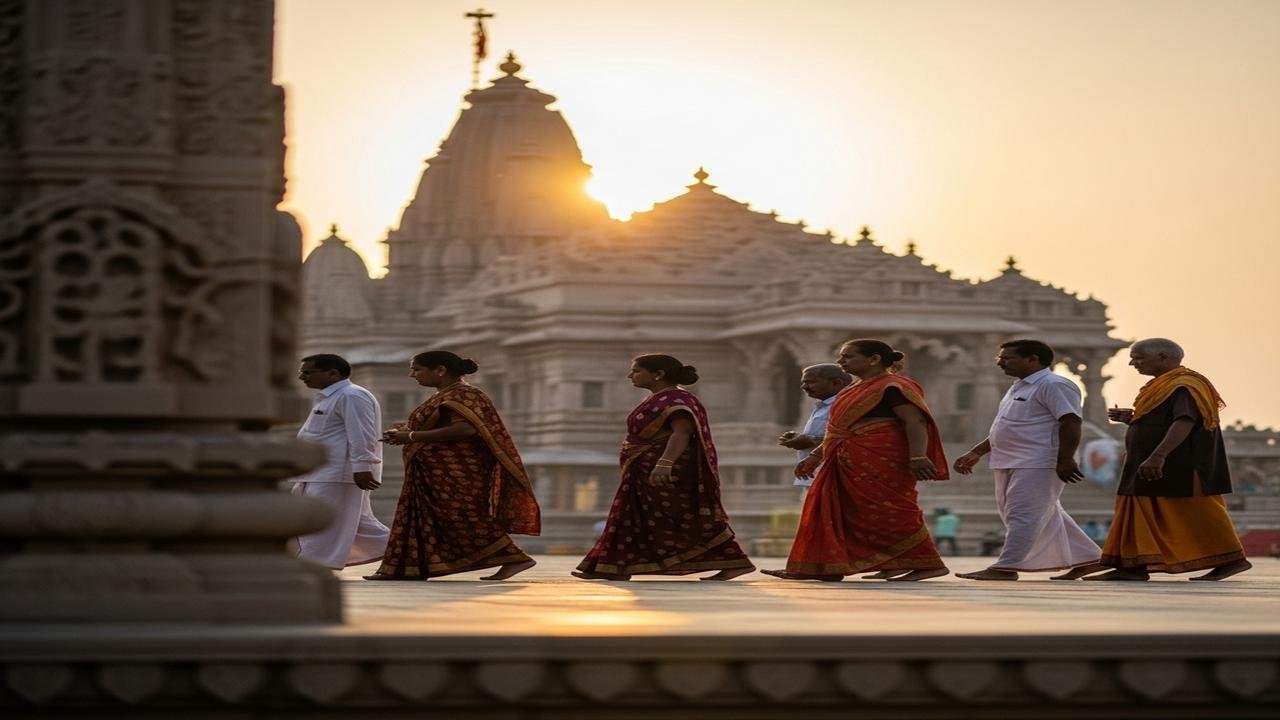The Real Reason Hindus Circle Temples in Pradakshina

In the quiet morning light, an old woman leads her granddaughter around the small village temple. She walks slowly, barefoot, touching the cool stone with each step. The bell rings. The child looks up, puzzled, and the grandmother smiles: “We keep the Lord at the center.”
This gentle scene explains why Hindus circumambulate around a temple — a practice called pradakshina or parikrama. It is a simple act of devotion that carries deep meaning. As we walk, we are invited to turn our attention from the busy world to the sacred center that holds our faith and hopes.
At its heart, circumambulation is about direction and focus. Devotees walk clockwise, keeping the deity to their right. This movement mirrors the sun’s path and the natural order. In this way, the act becomes an expression of alignment — aligning the body, breath, and heart with something greater than ourselves.
The symbolism of walking around the temple is rich. First, the temple represents the cosmos and the inner self. By moving around it, a pilgrim acknowledges that the divine is the center of life. Each step becomes a prayer; each round a small surrender of ego and desire. Over time, the repeated motion helps quiet the mind and opens space for devotion.
Historically, circumambulation has roots in Vedic and Agamic traditions. Ancient texts and temple manuals advise appropriate ways to approach the shrine, showing that parikrama has been both religiously meaningful and culturally important for centuries. You can see this tradition in many forms — from the inner pradakshina inside the sanctum to the grand parikrama of sacred rivers and mountains.
There are many practical traditions tied to the practice. Devotees often begin at the temple entrance, touch the threshold, and start with the right foot. Some perform a set number of rounds — three, seven, or eleven — each number with its own significance. At some temples, men and women may follow slightly different paths, but the spirit remains the same: reverence and focus.
Walking around a shrine is not only spiritual; it is deeply communal. During festivals and pilgrimages, people move together in quiet rhythm. The sound of bells, the murmur of prayers, and the aroma of incense weave a tapestry of shared faith. In these moments, the practice becomes a bridge between personal devotion and collective belonging.
Modern life has given new meanings to this age-old custom. For many, pradakshina is a form of walking meditation. It slows the pace, helps release stress, and brings a sense of presence. Pilgrims and city-dwellers alike find that a few rounds around a temple restore calm and remind them of values they want to live by.
Some famous parikrama traditions capture the imagination: the circumambulation of Govardhan Hill, the long parikrama routes around sacred towns, and the daily pradakshina in ancient temples like Tirupati. Each path tells its own story, shaped by devotion, history, and landscape.
If you visit a temple and wish to try pradakshina, keep your steps gentle and respectful. Keep the deity to your right, move in silence if you can, and let each round be a small offering — not of things, but of attention and love.
Conclusion: Circumambulating a temple is a simple, living prayer that brings the outer journey inward. It teaches us to walk with reverence, to center our lives around what truly matters, and to find calm in motion. May every step remind you of the sacred center within.
